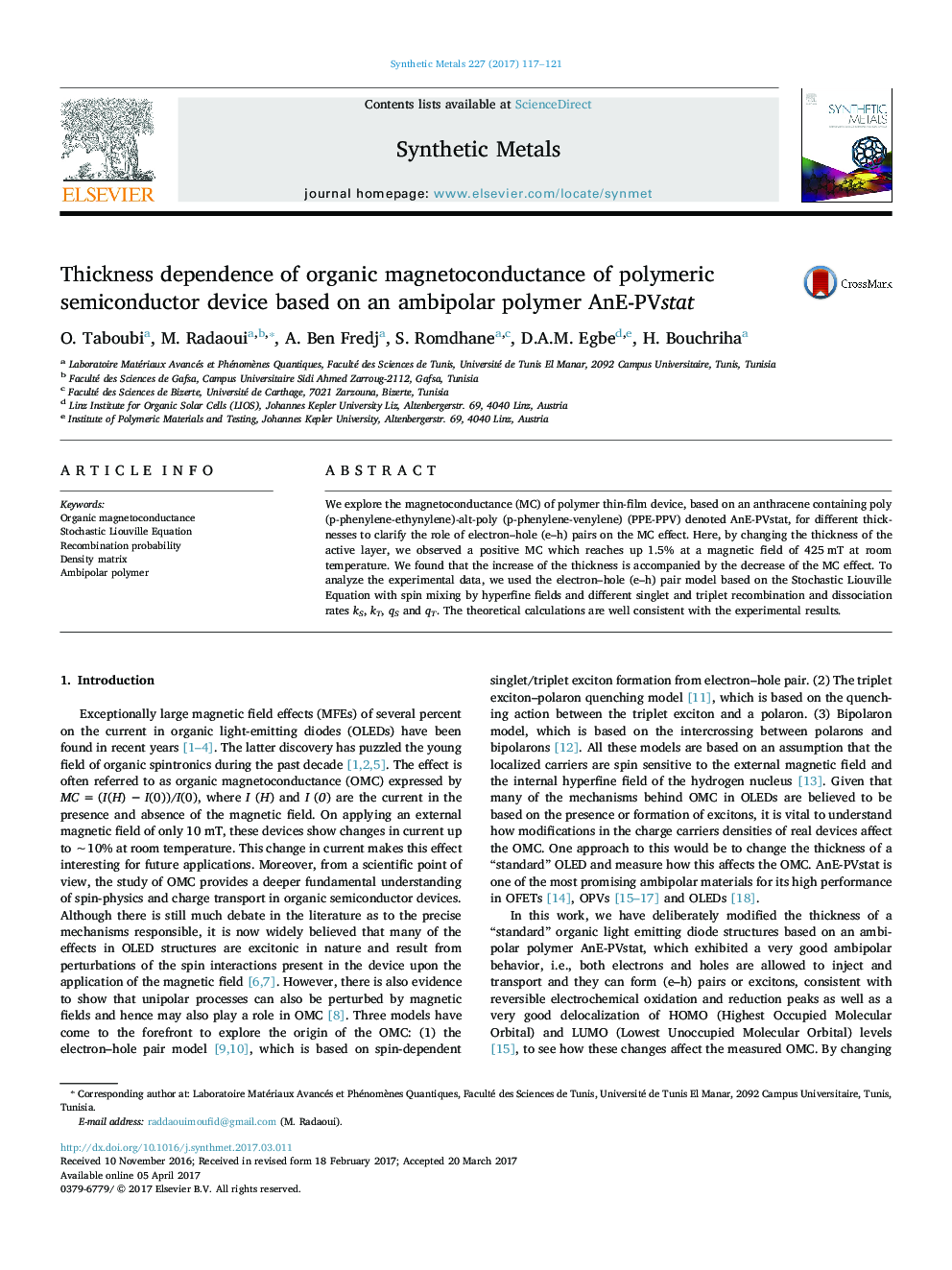| Article ID | Journal | Published Year | Pages | File Type |
|---|---|---|---|---|
| 5435415 | Synthetic Metals | 2017 | 5 Pages |
â¢Magnetoconductance (MC) effect on an ambipolar polymer thin-film device.â¢By changing the thickness of the active layer, we observed a positive MC which reaches up 1.5% at a magnetic field of 425 mT at room temperature.â¢The increase of the thickness is accompanied by the decrease of the MC effect.â¢To analyze the experimental data, we used the electron-hole (e-h) pair model based on the Stochastic Liouville Equation with spin mixing by hyperfine fields and different singlet and triplet recombination and dissociation rates kS, kT, qS and qT.â¢Changing the active layer thickness leads to marked changes in charge-trapping suggesting that carrier transport and recombination processes change depending on the active layer thickness.
We explore the magnetoconductance (MC) of polymer thin-film device, based on an anthracene containing poly (p-phenylene-ethynylene)-alt-poly (p-phenylene-venylene) (PPE-PPV) denoted AnE-PVstat, for different thicknesses to clarify the role of electron-hole (e-h) pairs on the MC effect. Here, by changing the thickness of the active layer, we observed a positive MC which reaches up 1.5% at a magnetic field of 425Â mT at room temperature. We found that the increase of the thickness is accompanied by the decrease of the MC effect. To analyze the experimental data, we used the electron-hole (e-h) pair model based on the Stochastic Liouville Equation with spin mixing by hyperfine fields and different singlet and triplet recombination and dissociation rates kS, kT, qS and qT. The theoretical calculations are well consistent with the experimental results.
